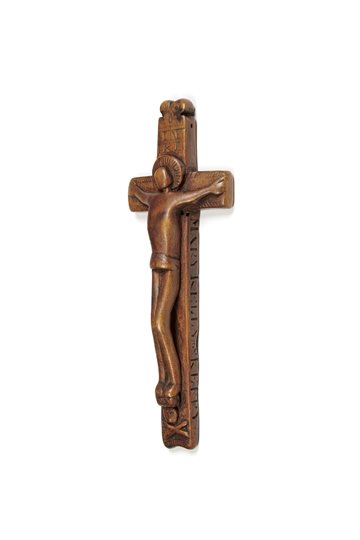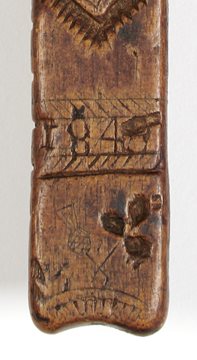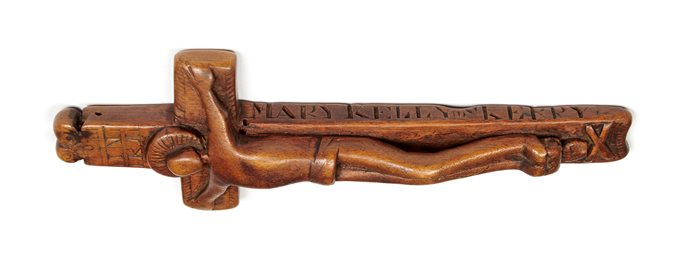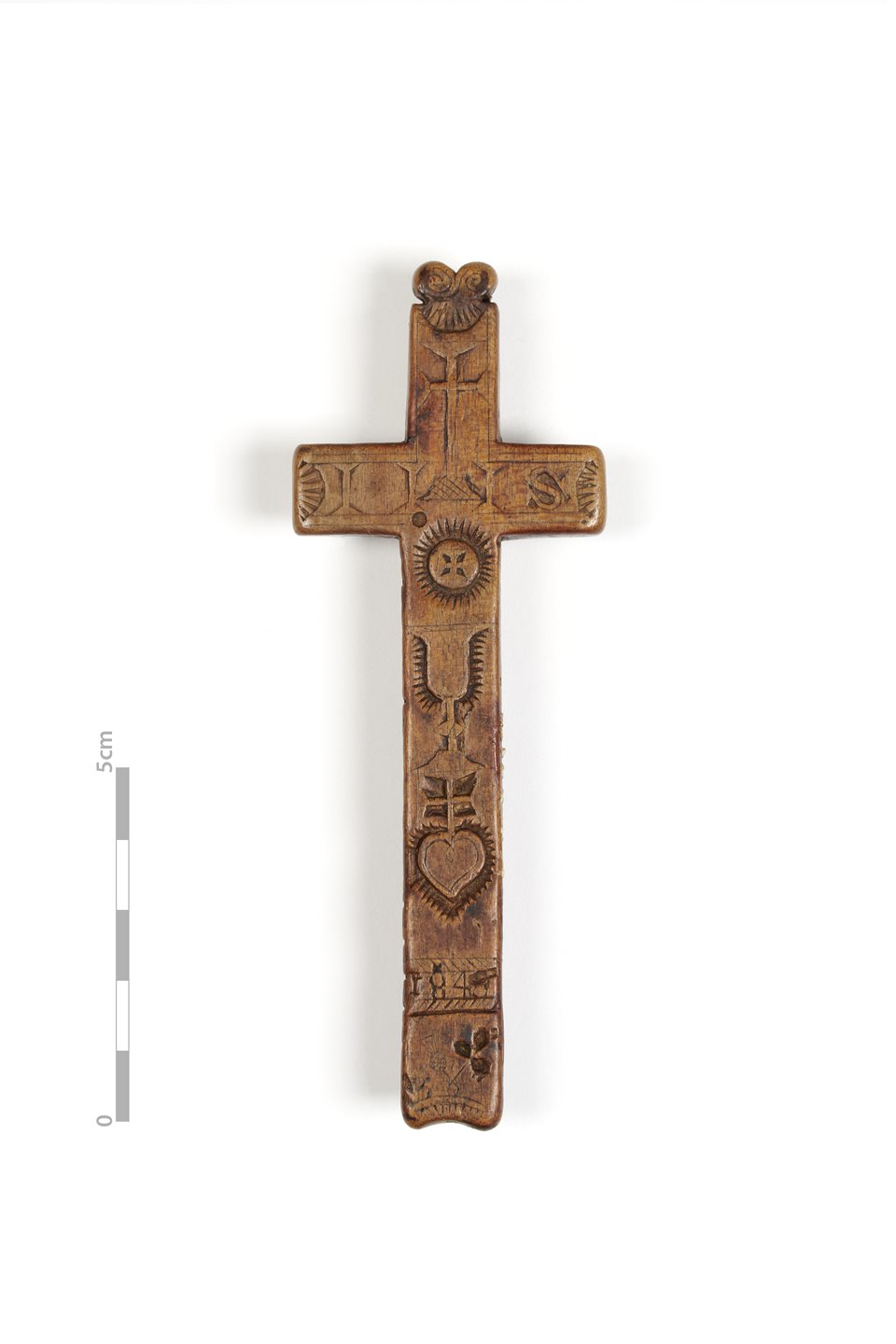Cros na bPéindlíthe / Penal Cross
Co. Kerry
F:L1327a
This finely carved ‘Penal Cross’ is one of the few objects to which we have a definitive date linked to the period of the Great Irish Famine. Inscribed on its reverse, near the base, can be seen the year, 1848. Carved into the upright portion of the cross is the name ‘Mary Kelly, Kerry’.


More commonly known as ‘Penal crosses’, the more appropriate term would be a crucifix. The association of ‘Penal’ to these ‘crosses’ is more from folklore than the actual date of carving or use.
It has been suggested that these crosses were made in the vicinity of Lough Derg, the pilgrimage site in county Donegal.[1] At the outset of the Famine it was estimated that perhaps as many as 30,000 pilgrims visited Station Island on Lough Derg. Numbers would decline afterwards, attributed in part to ‘the famine of '47, and the consequent depopulation of our country by emigration and extirpation’.[2]
The location of Lough Derg in the north-west of the country and the difficulties of travel in the middle of the nineteenth century, suggests, that most of the pilgrims who travelled to it came from the surrounding counties. Some pilgrims, and the curious, did travel from far afield and it may be that this cross here falls into the category of a ‘wanderer’.[3] One such curious traveller, a Thomas Campbell Foster, recorded in 1846 the sale of ‘rudely carved little wooden crucifixes’ by ‘peasant children’ to pilgrims on the way to the ‘station’ at Lough Derg.[4]
The season for making a pilgrimage to Lough Derg was short. Starting at the beginning of June, it ran until the 15th August. This would have coincided with a lull in farming activity and allowed pilgrims to attend just before the onset of harvest.
The pilgrims would spend three days at Lough Derg performing the required religious exercises. One pilgrim during the Famine recounted his travels there with the potato crop in full bloom. By the time of his return trip though, the crop was ‘stricken, leaves and stalks blackened and an air of pestilence, corruption and stench pervaded the air’.[5]

Did a Mary Kelly travel from Kerry to Donegal during the difficult years of the Famine? Completion of the requisite religious exercises, which included fasting, granted the pilgrim a plenary indulgence. When surrounded by death and deprivation, did a heightened awareness of mortality, encourage a greater desire to seek religious solace?
The carving style of Mary Kelly’s name and county suggests that this part was done by a different hand to the crucifix as a whole. Was this to mark the date of a personal pilgrimage to Lough Derg, or perhaps it was given as a gift to Mary? It may have been carved as a mark of remembrance to a loved one who had passed away. Unfortunately, the records tell us little more about origins, maker or owner but does offer a moment to reflect on the many lost stories of the Great Irish Famine.
Liam Doherty - Irish Folklife Division - National Museum of Ireland
[1] Lucas, A.T., ‘ “Penal” Crosses’ in Louth Archaeological Journal, Vol. XIII, No.2, 1954, p.170
[2] O’Connor, Daniel, Rev., Lough Derg and its pilgrimages, (Dublin, 1879), p.172 (Given the size of the island and the shortness of the pilgrimage season – June 1st to August 15th – this estimate could be questioned.)
[3] Lucas, p.169
[4] quoted in Lucas, p.166
[5] Póirtéir, Cathal, Famine Echoes, (Dublin, 1995), p.36


